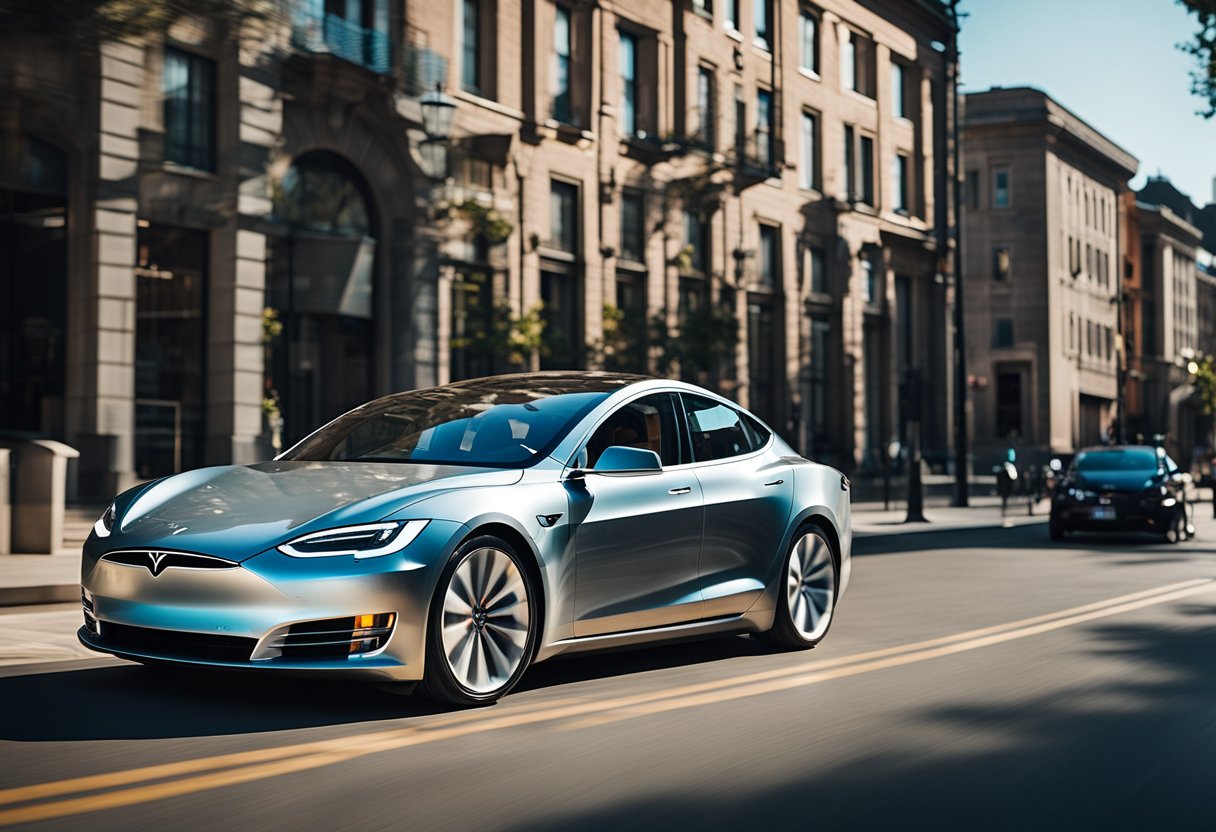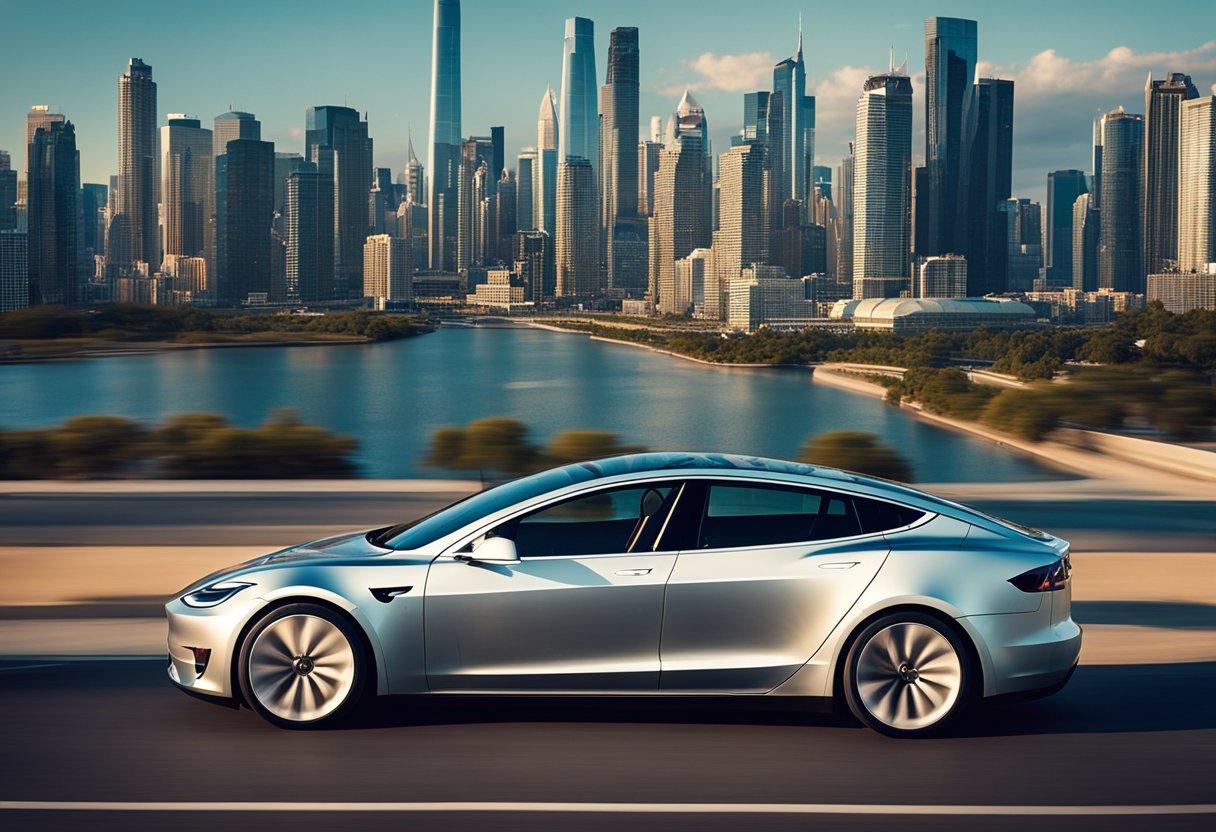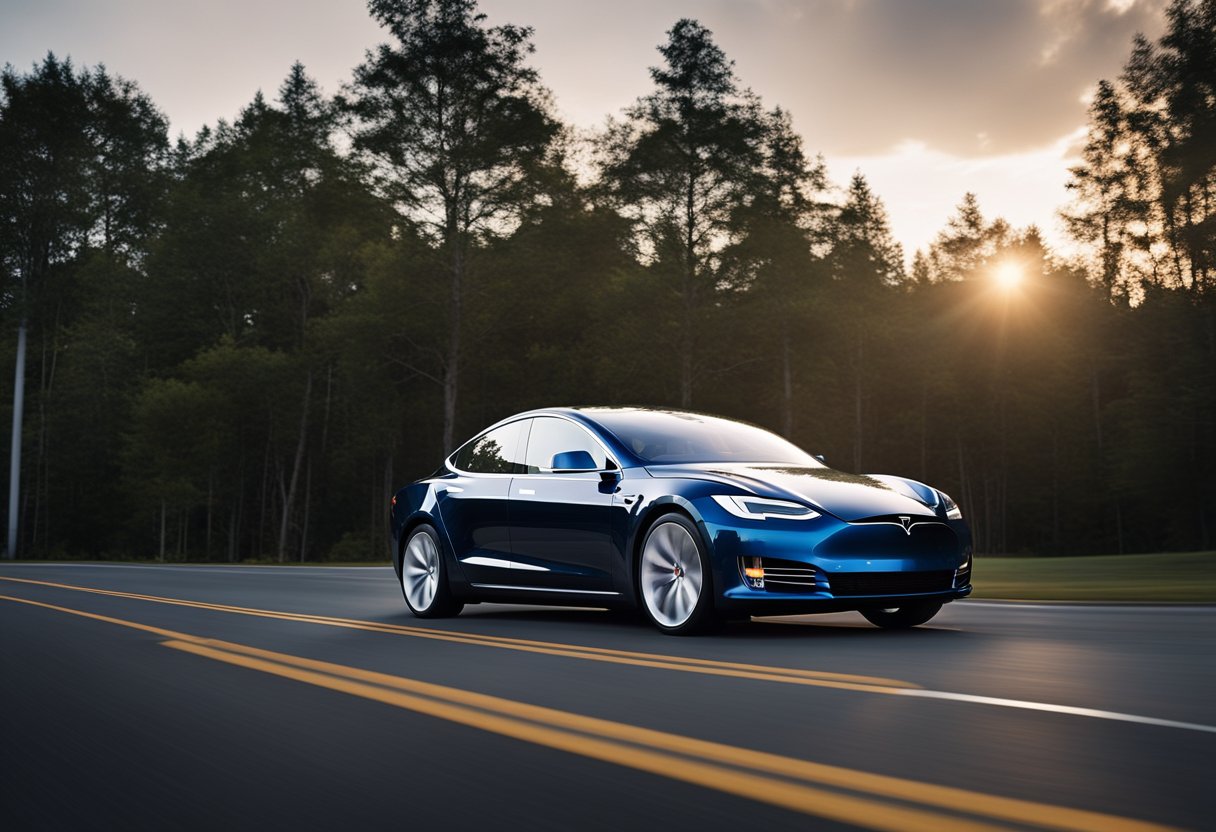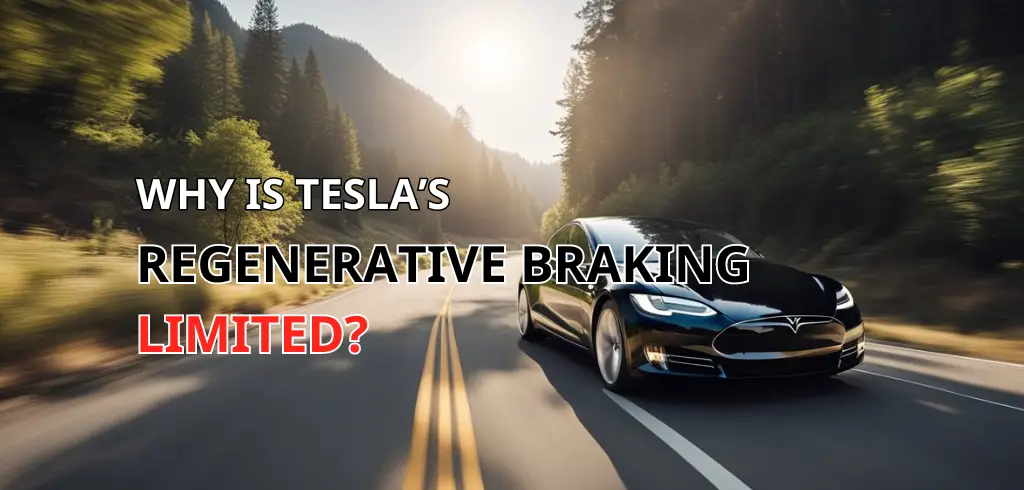If you own a Tesla or are considering purchasing one, you may have heard the term “regenerative braking” thrown around. Regenerative braking is a unique feature of electric vehicles (EVs) that allows them to recapture some of the energy lost during braking and use it to recharge the battery. However, you may have also heard that regenerative braking in Teslas is sometimes limited. In this article, we will explore the reasons for this limitation and what it means for Tesla owners.

Understanding regenerative braking is key to understanding why it is sometimes limited in Teslas. When you press the brake pedal in a traditional gas-powered car, the kinetic energy of the vehicle is converted into heat and dissipated into the environment.
With regenerative braking, the electric motor in an EV is used to slow down the vehicle, and the kinetic energy is converted into electrical energy and stored in the battery. This process is not 100% efficient, and some energy is still lost as heat. However, it is a significant improvement over traditional braking systems.
Tesla’s unique approach to regenerative braking is another factor that contributes to its limitations. Tesla vehicles use a form of regenerative braking called “blended braking”, which combines regenerative braking with traditional friction braking.
This approach allows for smoother and more predictable braking, but it also means that the amount of regenerative braking that can be applied is limited by the amount of friction braking that is needed to bring the vehicle to a stop.
Table of Contents
Understanding Regenerative Braking
If you own a Tesla, you are likely familiar with regenerative braking. Regenerative braking is a technology that captures the kinetic energy of a moving vehicle and converts it into electrical energy. This electrical energy is then stored in the vehicle’s battery for later use.
When you press the brake pedal in a Tesla, the regenerative braking system is activated. The system uses the electric motor as a generator to capture the kinetic energy that would otherwise be lost as heat. This captured energy is then converted into electrical energy and sent back to the battery.
One of the benefits of regenerative braking is that it reduces wear and tear on the braking system. Since the electric motor is used to slow down the vehicle, the brake pads and rotors are used less often. This means that the braking system will last longer and require less maintenance.
It’s important to note that regenerative braking is not always effective. In cold weather, for example, the regenerative braking system may be limited. This is because the battery may not be able to accept as much energy when it is cold. Additionally, if the battery is already fully charged, the regenerative braking system may not be able to capture any additional energy.
In summary, regenerative braking is a technology that captures the kinetic energy of a moving vehicle and converts it into electrical energy. This technology helps to reduce wear and tear on the braking system and can improve the overall efficiency of a vehicle. However, it is important to understand that the effectiveness of regenerative braking may be limited in certain conditions.
Tesla’s Unique Approach to Regenerative Braking
When it comes to regenerative braking, Tesla has taken a unique approach that sets it apart from other automakers. The company’s electric motors are designed to allow for one-pedal driving, which means that you can use the accelerator pedal to both speed up and slow down the vehicle.
This is possible because the electric motor can be used to slow down the car, converting kinetic energy into electrical energy that is stored in the battery. Tesla’s regenerative braking system is controlled by software, which allows the automaker to fine-tune the system to provide the best possible driving experience.
In the past, Tesla had limited the ability for drivers to adjust the strength of regenerative braking, but a recent software update has brought back the standard and low settings for this feature. The low setting limits regenerative braking, which can be useful in certain situations where you don’t want the car to slow down too quickly.
The release notes for the software update state that “the low setting is intended for a more natural driving experience.” This is because some drivers may find the strong regenerative braking to be too aggressive, especially if they are used to driving a traditional gas-powered car.
Tesla’s unique approach to regenerative braking has also helped to improve the range of its electric vehicles. By using the electric motor to slow down the car, the braking components are subjected to less wear and tear, which means they last longer and require less maintenance. This can help to reduce the cost of ownership over time.
Overall, Tesla’s regenerative braking system is just one example of the automaker’s commitment to innovation and improving the driving experience for its customers. Whether you’re driving a Model S, Model 3, or Model Y, you can take advantage of this feature and enjoy a more efficient and enjoyable ride.
Impact of Regenerative Braking on Tesla Vehicles
Regenerative braking is a technology that converts kinetic energy into electrical energy, which is then stored in the battery. Tesla vehicles are known for their regenerative braking system, which helps to improve the driving experience and make the vehicle more efficient.
When you take your foot off the accelerator pedal, the regenerative braking system kicks in, and the vehicle starts to slow down. The amount of deceleration depends on the speed of the vehicle, the state of charge of the battery, and the mass of the vehicle. The regen bar on the dashboard shows how much energy is being recovered.
The regenerative braking system is designed to provide consistent deceleration, which means that you can use it to slow down the vehicle without having to apply the brakes manually. This feature is particularly useful in stop-and-go traffic, where you can use one-pedal driving to reduce wear and tear on the brakes.
However, regenerative braking is limited at low speeds, and the vehicle will need to apply the regular brakes to compensate for the lack of regenerative braking. This is more likely to happen when the battery is cold, and the vehicle is driving at low speeds. Tesla has addressed this issue by adding the option to apply the regular brakes when regenerative braking is limited.
In cold weather, the regenerative braking system may not be as efficient, as the battery is colder, and there is less waste heat available to warm it up. This can affect the driving experience and reduce the efficiency of the vehicle. However, Tesla has designed its vehicles to perform well in cold temperatures, and the regenerative braking system still works well in most conditions.
The regenerative braking system also works in conjunction with the acceleration system, which uses torque and voltage to provide traction and improve the driving experience. The regenerative braking system is particularly useful when driving on roads with a dotted line, as it helps to maintain a consistent speed and reduce the need for manual braking.
Overall, the regenerative braking system is an important feature of Tesla vehicles, and it helps to improve the driving experience and make the vehicle more efficient. However, it is important to be aware of its limitations, particularly in cold weather and at low speeds. By understanding how the regenerative braking system works, you can maximize its benefits and enjoy a safer and more efficient driving experience.
Future Developments and Updates

Tesla is constantly innovating and improving its vehicles through software updates. The regenerative braking system is no exception, and Tesla has made several updates to this feature over the years. With each update, the company has improved the efficiency and performance of the regenerative braking system, making it smoother and more intuitive to use.
Some of the recent updates to regenerative braking include the reintroduction of the “Low” regenerative braking option, which allows drivers to select a lower level of regenerative braking. This feature was removed in late 2020 but has since been brought back in a software update. According to CleanTechnica, Tesla is looking to re-deploy this feature in a coming update.
Another recent update to regenerative braking is the addition of the option to apply regular brakes when regenerative braking is limited. This feature was added in a software update in 2022, and it compensates for the lack of regenerative braking when it is limited. According to Electrek, this feature is particularly useful when driving downhill or when towing a heavy load.
Tesla has also made improvements to the regenerative braking system when Autopilot is activated. According to Teslarati, Autopilot now uses more regenerative braking when slowing down, which improves energy efficiency and reduces wear on the brake pads.
In addition to these updates, Tesla is constantly working on new features and improvements for its vehicles. For example, the company is currently working on a semi-truck that will use regenerative braking to help extend its range. The semi-truck will also feature advanced safety features, such as a front camera washer, a seatbelt reminder system, and hazard lights that automatically turn on during emergency braking.
Tesla is also building a new Gigafactory in Texas, which will produce the Cybertruck and other Tesla vehicles. The Cybertruck is expected to have impressive towing capacity and payload, and it will feature a unique charging architecture that allows it to charge quickly and efficiently.
Overall, Tesla’s commitment to innovation and improvement means that the company’s production models are always evolving and improving. With each software update, Tesla is able to make its vehicles more efficient, more intuitive, and more advanced than ever before.
Conclusion

In conclusion, regenerative braking is an essential feature in EVs, including Tesla models. It helps increase the range and improves efficiency, making it a crucial part of the vehicle’s design.
However, it is important to note that regenerative braking in a Tesla may be limited due to several factors, such as battery health and temperature, low traction conditions, the use of Adaptive Cruise Control or Autopilot, a small battery percentage, or when in Performance Mode [1].
Safety is a top priority for Tesla, and the company has implemented various features to ensure that the braking system functions correctly. For instance, Tesla vehicles have an anti-lock braking system (ABS) that prevents the wheels from locking when you apply maximum brake pressure.
Tesla is continually working on improving its regenerative braking system and has released software updates that bring back regenerative braking options for its electric cars. As the technology advances, it is likely that we will see more significant improvements in regenerative braking systems in the future.
In conclusion, regenerative braking is a crucial feature in Tesla models that helps improve efficiency and increase range. While there may be limitations to the system, Tesla is continually working on improving its braking system to ensure safety and better performance.
Frequently Asked Questions
How do I turn off regenerative braking on my Tesla Model Y?
You cannot turn off regenerative braking completely on your Tesla Model Y. However, you can adjust the regenerative braking strength to a lower setting by using the touchscreen menu. Go to “Controls” > “Driving” > “Regenerative Braking” and choose “Low” or “Standard” instead of “Standard” or “Low”.
What are the regenerative braking settings for a Tesla Model 3?
The regenerative braking settings for a Tesla Model 3 can be adjusted by going to “Controls” > “Driving” > “Regenerative Braking“. You can choose between “Low”, “Standard”, and “High” settings. The “Standard” setting is the default and provides a balance between energy recuperation and driving feel. “Low” provides less regenerative braking, while “High” provides more aggressive regenerative braking.
How can I increase the regen braking on my Tesla?
You can increase the regenerative braking strength on your Tesla by adjusting the settings in the touchscreen menu. Go to “Controls” > “Driving” > “Regenerative Braking” and choose “High” instead of “Standard” or “Low”. Keep in mind that more aggressive regenerative braking may affect the driving feel of your Tesla.
What causes Tesla regenerative braking to be temporarily reduced?
Tesla regenerative braking can be temporarily reduced due to several factors. One common reason is cold weather, which can reduce the effectiveness of regenerative braking. Another reason is a low battery charge, which can limit the amount of energy that can be stored. Additionally, if your Tesla’s brake pads are worn, regenerative braking may be limited to prevent damage to the brakes.
What happened to Tesla regenerative braking?
Tesla regenerative braking is still a feature of all Tesla vehicles. However, the strength of regenerative braking may be limited in certain situations, such as cold weather or low battery charge. Tesla has also added the option to apply regular brakes when regenerative braking is limited in its latest software update.

